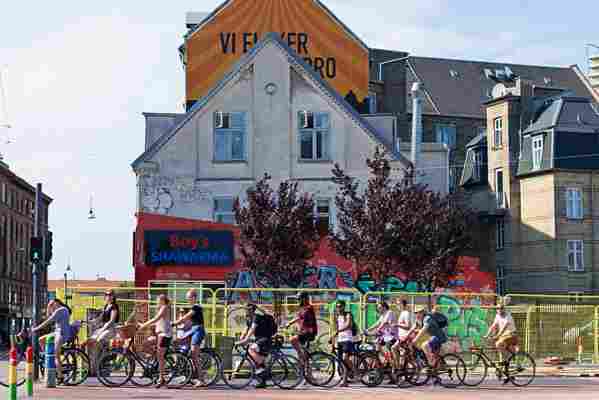Copenhagen has tried to face the challenge of overtourism by introducing new strategies to better manage the influx of visitors but according to some experts, it's not enough.

Denmark's capital is an easy sell at any time of year. In summer , locals and tourists swim in urban harbours like Islands Brygge, soak up the sun in King’s Garden or flock to the open-air street food market Reffen . In winter, there's a warmth and cosiness - or hygge - from candles in cafe windows, the fairy-light beams from the Frederiksberg Gardens skating rink and the glow of bicycle lights as people course through the city on two wheels. It's also consistently rated as one of the most liveable and happiest cities in the world. So naturally outsiders are keen to see for themselves what makes the Danes so cheerful or discover the ways in which they can bring a little hygge back to their hometown. But a major EU report , published last year, found that Copenhagen is one of the 105 areas within that bloc that's in a state of overtourism .

Most visitors to the city - around 87% - tend to stay in and around the inner-city, especially the 17th-century canal district Nyhavn with its colourful merchant houses. And herein lies one of the biggest problems. The concentrated inflow of tourists clogging the heart of the city is starting to put a strain on urban life with increased waste, noise and traffic levels. In response to the issue, Wonderful Copenhagen - a tourism agency that was established to lure more tourists to Copenhagen - has said it will stop marketing Nyhavn as a tourist destination and try to encourage people to visit areas outside the city centre. Some tourism experts, however, don't believe that's enough. "We have had 'overtourism' in Copenhagen for many years and it's a growing problem but it hasn't been discussed," Widtfeldt Meged, a lecturer at Roskilde University, told the Jyllands-Posten newspaper. "It's a little as if they're all ducking responsibility," said Hjalager, a professor at the University of Southern Denmark. "The city government has the right, the means and the duty to do something about it and it should step in more."

The Danish capital saw a 74% increase in tourists over the past decade and received 8.8 million guests (not including the 1.9 million Airbnb users) in 2018 alone, a figure that's expected to double by 2030, according to Wonderful Copenhagen. Meged said the tourism agency's plans to take the pressure of Nyhavn by marketing districts like hip Vesterbro , multicultural Nørrebro and the seaside-facing Amager are "too little, too late" and encouraged the city to use more "tangible resources" like limiting the number of cruise ships to the city.
But Wonderful Copenhagen is working to do just that. Claus Bødker, the head of the agency's cruise ship division, told Jyllands-Posten: "we are working determinedly to create a greater spread of visits, both geographically and by season." And in 2018, Wonderful Copenhagen launched the long-term Tourism for Good campaign, which puts sustainability at the core of all of its new projects and partnerships. The campaign was acknowledged internationally by several organisations including UN’s tourism organisation, UNTWO.

Leave a Reply